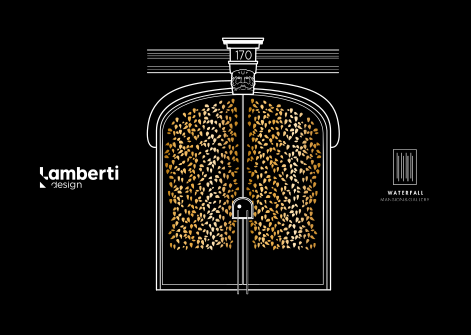A bench with a back, made by cutting a raw iron plate, thickness 15/10. It is the specific characteristics of this material that have made it possible to obtain a monolithic piece of furniture, with an arched profile, therefore a resistant shape: the seat. Firm, expressive, determined, capable, influential. It finds its place in many places, accompanied by a backrest that represents its complement or completion, made up of panels with an upper profile that is also curvilinear.The union between the two takes place through welding which allows the physical/chemical union of two joints by means of the fusion of the same or through filler metal. The filler metal used is the one resulting from the cuts made in the plate to obtain the backrest panels; the cuts are carefully studied so that material waste is reduced to a minimum; the resulting shape is particular, then reproduced until obtaining the number necessary to complete the model. The filler metal unites and embellishes the backrest and, placed on the sides of the seat, characterizes it, it loses its proper function and becomes, "by chance", an element of decoration, but not only, also an evocative element, capable of bringing to mind a very precise image, of a falling blade of water, a waterfall.
A bench because it is a versatile piece of furniture, as a seat for a table, a seat around a living room, as an entrance furniture, as a complement along a corridor or simply along a wall or simply free-standing. Curvilinear profiles because they are form resistant, they are able to coexist with multiple styles, from classic to modern, in continuity or in contrast. The dimensions in function of the use and related to the size of the slab with which you choose to design. Finishes and geometric (w, h, l) of the bench and the back can be modified.
The name: iron is the chemical element with atomic number 26. Its symbol is Fe. It is the first element of group 8 of the periodic table, belonging to the d-block.



